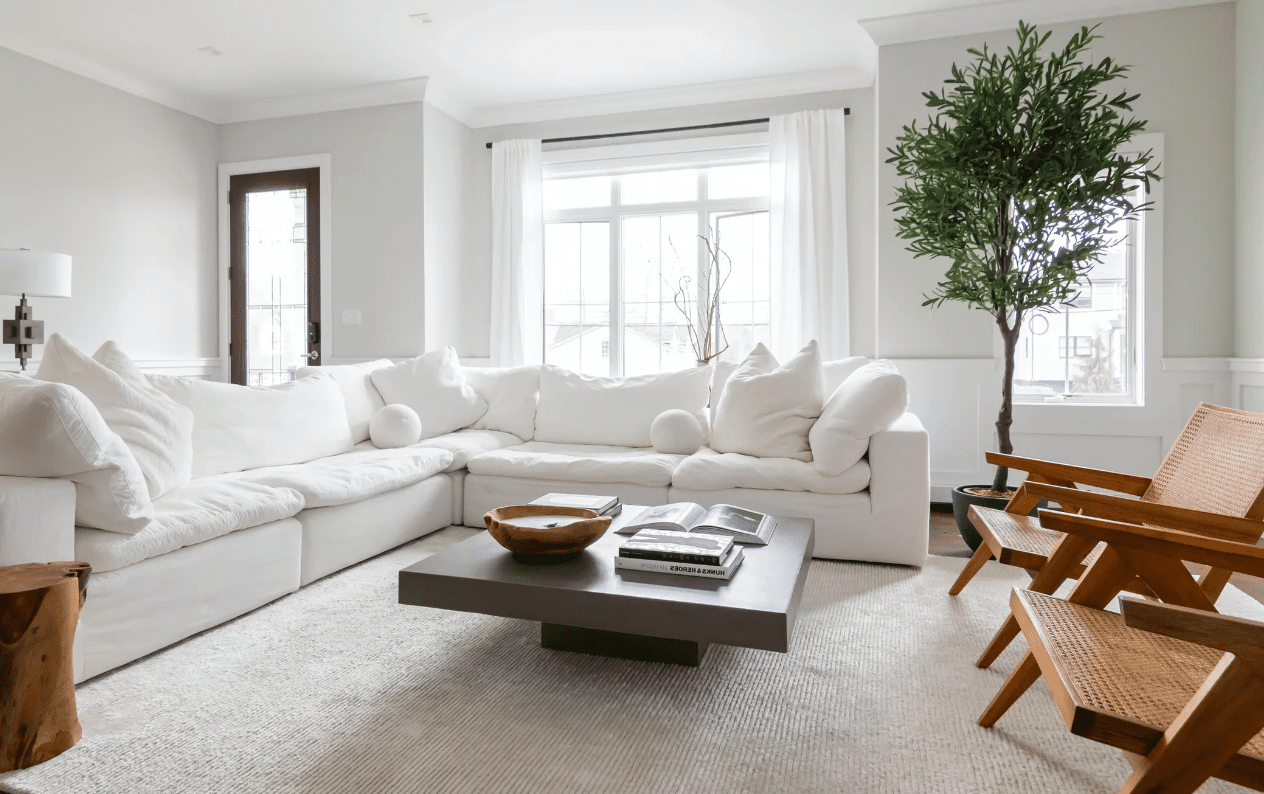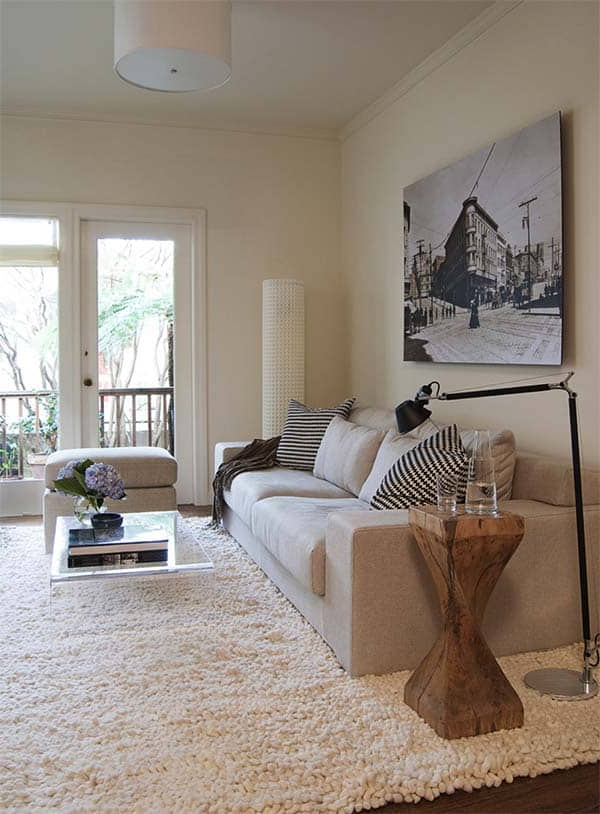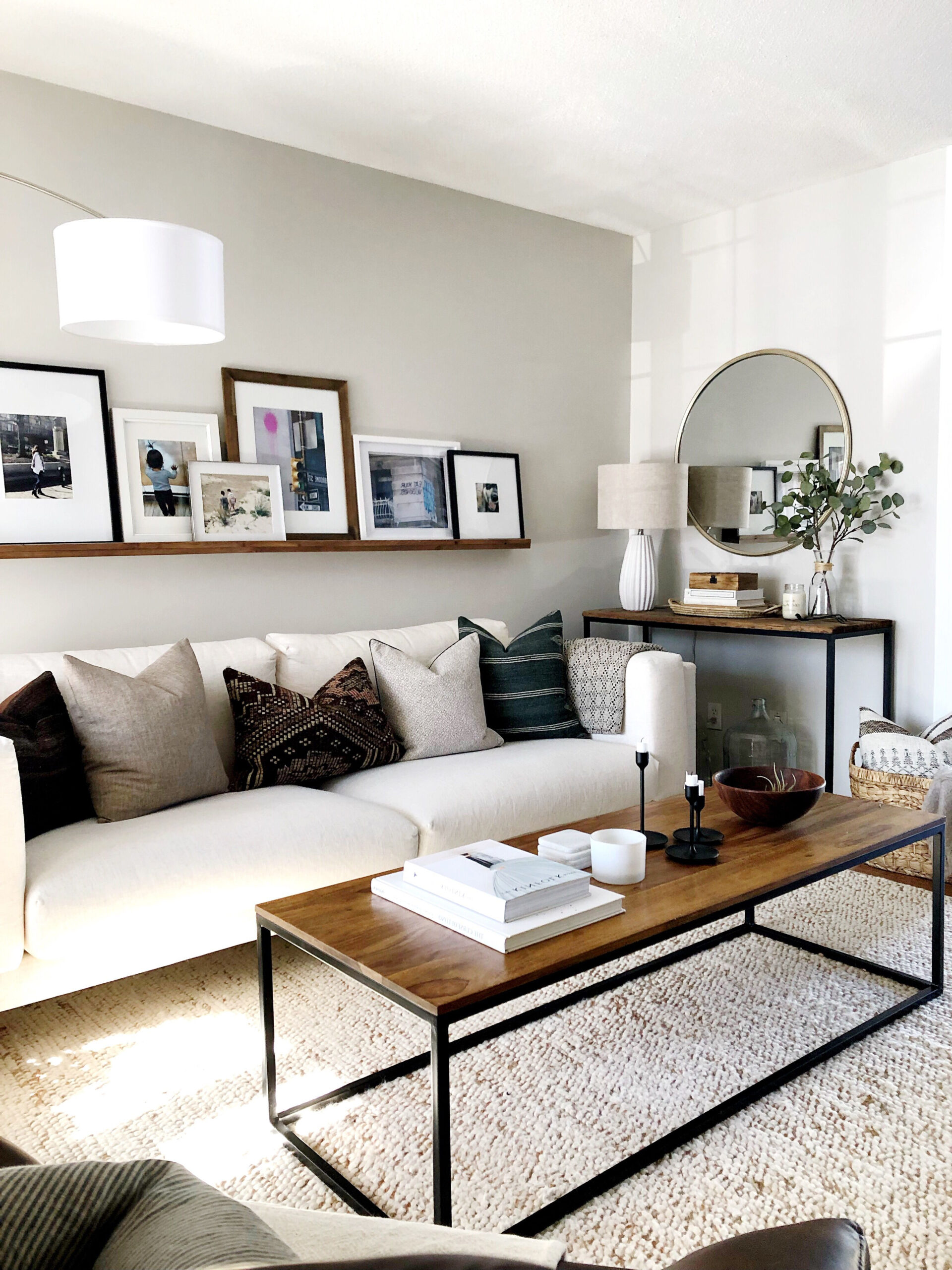Imagine walking into a room that instantly calms your mind and soothes your soul. That’s the magic of a neutral living room sanctuary. These spaces don’t just look beautiful – they feel like a gentle hug after a long day. The right combination of colors, textures, and furniture can transform any space into a peaceful retreat where you can truly unwind.
In our fast-paced world, our homes have become the last refuge where we can escape the chaos. A well-designed neutral living room can be that perfect sanctuary – a place where stress melts away and tranquility takes hold. The beauty of neutral tones lies not just in their visual appeal, but in their remarkable ability to create a sense of calm and balance. Whether you’re drawn to soft beiges, soothing grays, or warm creams, these color families offer endless possibilities for crafting spaces that feel both sophisticated and comforting. The key isn’t just in choosing the right hues, but understanding how to layer them thoughtfully to create depth and interest while maintaining that essential serenity.
The Power of Neutral Color Palettes
Neutral colors aren’t just boring beige shades – they’re the foundation of timeless elegance. When you think about it, these colors naturally occur everywhere around us. Think of sand dunes, mountain peaks, and the gentle light of dawn. They’re inherently calming because they don’t compete for attention. Instead, they let other elements shine while providing that crucial base that makes everything else feel harmonious. The psychology behind neutral tones is fascinating – they tend to reduce eye strain, create a sense of spaciousness, and promote feelings of peace and stability. This is why so many designers swear by them for living rooms, where people spend significant time relaxing and gathering with loved ones. A neutral palette gives your space flexibility too, making it easier to change accessories and seasonal decor without feeling like you’re starting over.
Choosing the Right Base Tones
Starting with the right foundation is crucial. You’ll want to consider your room’s natural lighting when selecting your primary neutral colors. For rooms with lots of natural light, deeper neutrals like warm gray or charcoal can create dramatic contrast while still feeling serene. In smaller spaces with limited light, lighter tones such as cream or pale beige will help make the room feel more open and airy. Consider the undertones too – some neutrals have subtle warm or cool undertones that can dramatically affect the mood. A warm gray might feel cozy and inviting, while a cool gray could seem more modern and crisp. Test samples on your walls before committing – colors can look completely different in various lighting conditions throughout the day. Sometimes a simple beige might appear yellowish in morning light but look more neutral under evening lamps. Take your time with this decision because it’s one of the most important choices you’ll make.
Layering Textures for Depth and Interest
Here’s where things get really interesting – texture is what transforms a simple neutral space into something truly special. Think of how a rough stone wall looks different from a smooth silk fabric. Mixing textures adds dimension and prevents the room from feeling flat or sterile. Start with larger elements like a chunky knit throw or a natural wood coffee table. Then layer smaller textures like a silk pillow, a wool rug, or even a woven basket. The beauty of neutral tones is that they allow you to experiment with different materials without worrying about clashing colors. A linen sofa in a soft gray can pair beautifully with a velvet accent chair in a warm taupe, creating visual interest while maintaining that peaceful vibe. Don’t overlook the power of natural elements like bamboo, rattan, or stone – they bring organic warmth and earthiness that complements neutral schemes perfectly. The key is to keep the overall palette consistent, even as you introduce varied textures.
Smart Furniture Selection for Serenity
The right furniture can either enhance or disrupt the peaceful atmosphere you’re trying to create. Look for pieces with clean lines and simple silhouettes – avoid overly ornate designs that might feel busy or chaotic. Round or softly curved furniture tends to feel more welcoming than sharp angles, which can create a sense of tension. Choose pieces that are proportioned appropriately for your space – a large, heavy sofa might overwhelm a small room, while a tiny chair could get lost in a large space. Consider multifunctional furniture that serves more than one purpose, reducing visual clutter and maintaining that clean aesthetic. Natural materials like wood, rattan, and linen work exceptionally well in neutral spaces. Pay attention to proportions too – a low-profile sofa often feels more grounded and relaxed than a tall, imposing piece. The goal is to create a space that feels effortless, not arranged.
Lighting That Enhances Calmness
Lighting plays perhaps the most crucial role in setting the mood of any room. In a neutral living space, you want to create layers of light that can shift throughout the day and night. Start with ambient lighting – perhaps a soft ceiling fixture or chandelier that provides general illumination. Add task lighting for reading or working, like a floor lamp or table lamp with a warm bulb. Finally, incorporate accent lighting to highlight artwork or create cozy nooks. Dimmer switches are incredibly valuable – they allow you to adjust the mood from bright and energizing to soft and intimate. Consider using warm-toned bulbs (around 2700K-3000K) rather than cool white ones, as they create a more welcoming atmosphere. Natural light is always best, so make sure you’re maximizing it with minimal window treatments or sheer curtains that let light filter through gently. Sometimes a few strategically placed mirrors can help bounce natural light around the room, making it feel brighter and more expansive.
Accessorizing Without Overwhelming
Accessories are where you can express your personality while keeping that serene vibe intact. The golden rule here is to choose fewer items and make them count. A few carefully selected pieces are far more effective than a room full of decorative objects that compete for attention. When selecting accessories, stick to the neutral palette but add subtle pops of color through textiles, plants, or artwork. Think about the principle of ‘less is more’ – a single statement piece can be more impactful than several smaller items. Choose objects that have meaning to you, whether it’s a family photo, a favorite book, or a piece of art that brings you joy. Plants are particularly powerful in neutral spaces – they add life, color, and a connection to nature. Small succulents or a single fiddle leaf fig can transform a neutral room from simply elegant to truly alive. Remember to rotate seasonal items if you want to keep things fresh without changing the fundamental character of your space.
Creating a serene sanctuary with neutral living room ideas isn’t just about following trends – it’s about crafting a space that genuinely supports your wellbeing. The journey toward that perfect peaceful corner starts with understanding how colors, textures, and lighting work together to create atmosphere. It’s about making thoughtful choices that honor both your aesthetic preferences and your need for calm. Remember, there’s no one-size-fits-all approach to neutral design. What matters most is finding the combination of elements that feels authentic to you and your lifestyle. Whether you lean toward warm cream tones or cool gray backgrounds, the key is consistency and intentionality. Your neutral sanctuary should feel like a gentle embrace, a place where you can truly be yourself and recharge. The beauty of this approach is that it ages gracefully, remaining beautiful and functional for years to come. So take your time, experiment with different combinations, and trust that the right blend of neutral tones will create exactly the peaceful retreat you’ve been dreaming of.















